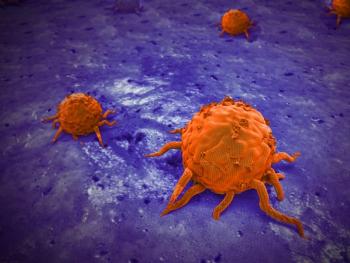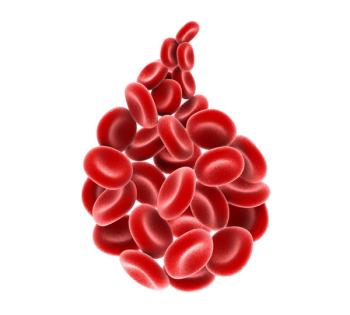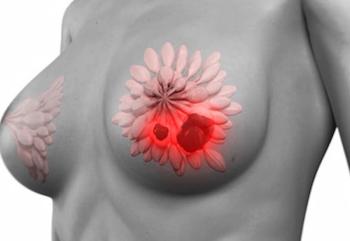
Oncology NEWS International
- Oncology NEWS International Vol 5 No 8
- Volume 5
- Issue 8
New Thinking on HIV Progression Leads to New Strategies
VANCOUVER, BC--The new more aggressive approach to HIV infection, using antiviral drugs early and in combination, reflects not only the availability of new drugs but also the application of new thinking about HIV infection (see reports "Early Combination Treatment May Provide HIV Control" and "Researchers Propose New Treatment Guidlines for HIV"). Initial (primary) HIV infection causes an acute flu-like syndrome that is followed by years of relatively asymptomatic disease. This period of "clinical latency" had been thought to reflect viral latency, but work by David D. Ho, MD, and his colleagues at the Aaron Diamond AIDS Research Center, New York, has shown otherwise.
VANCOUVER, BC--The new more aggressive approach to HIV infection,using antiviral drugs early and in combination, reflects not onlythe availability of new drugs but also the application of newthinking about HIV infection (see reports "Early CombinationTreatment May Provide HIV Control" and "ResearchersPropose New Treatment Guidlines for HIV"). Initial (primary)HIV infection causes an acute flu-like syndrome that is followedby years of relatively asymptomatic disease. This period of "clinicallatency" had been thought to reflect viral latency, but workby David D. Ho, MD, and his colleagues at the Aaron Diamond AIDSResearch Center, New York, has shown otherwise.
In research done in collaboration with George Shaw, MD, of theUniversity of Alabama (Birmingham), Dr. Ho showed that HIV continuesto multiply wildly during the "latent" period, producingabout 10 billion new virus particles per day. Most are eliminatedby the immune system, leaving a net "virologic set point"that remains relatively stable for years.
In his presentation at the 11th International Conference on AIDS,Dr. Ho said that this steady-state level (which can be measuredas copies of viral RNA per milliliter of plasma) varies from individualto individual and is predictive of long-term clinical outcome.
Risk of progression to AIDS within 5 years is 62% in patientswith viral loads over 36,270/mL but only 8% in those with viralloads under 4,350/mL. The new approach to treatment aims to lowerthe set-point in individuals with high viral loads.
Dr. Ho also suggested that eradication of HIV might be possibleif the virus were hit hard enough early and if antiviral therapywere maintained for long enough. This will require action on twofronts: the clearance of free virions from plasma and the removalof virus-producing cells such as infected macrophages and CD4lymphocytes.
Dr. Ho said that with aggressive antiviral treatment, clearanceof virus down to undetectable levels in plasma can be accomplishedin 1.25 days. Reducing new virus produced by the second "compartment"to undetectable levels requires about 2 weeks.
This still leaves a considerable pool of infected macrophages,estimated at 109. Dr. Ho estimated that, absent new sources ofinfection, these cells would "burn out" in 30 to 120weeks. "Even if our estimate is off by several orders ofmagnitude, it would not have a major impact. If the pool of infectedmacrophages is 100 times greater--1011 cells--they would burnout in 37 to 146 weeks," he said.
This offers the first estimate of what might be required to cureAIDS: suppression of viral replication below detectable limits(now 10 to 20 copies/mL) for about 3 years. Dr. Ho emphasizedthat this estimate does not account for new infections from apossible "sanctuary site" where HIV might hide out ofthe reach of drug treatment.
Articles in this issue
over 29 years ago
Chemo Improves Pain Relief in Advanced Prostate Cancerover 29 years ago
NCCR Urges Congress to Support Senate Bill for Cancer Researchover 29 years ago
Researchers Propose New Treatment Guidelines for HIVover 29 years ago
Salvage Cryotherapy for Prostate Cancer Studied at M.D. Andersonover 29 years ago
FNA Dropped From RDOG Study Due To High Rate of Insufficient Samplesover 29 years ago
Hospitals Told Not to Capitate for 'Wrong' Reasonsover 29 years ago
More Study Needed of Possible Carcinogenesis of Winter Gas Additiveover 29 years ago
President Makes NCAB Appointmentsover 29 years ago
Algorithm Identifies Women at Risk of Ovarian CancerNewsletter
Stay up to date on recent advances in the multidisciplinary approach to cancer.


















































































